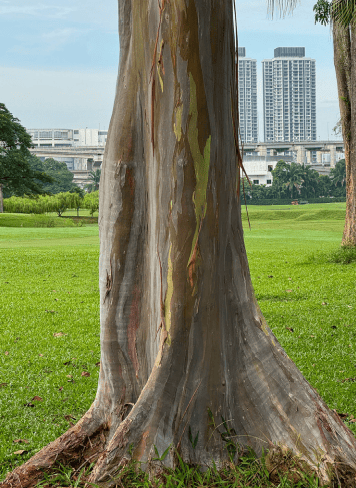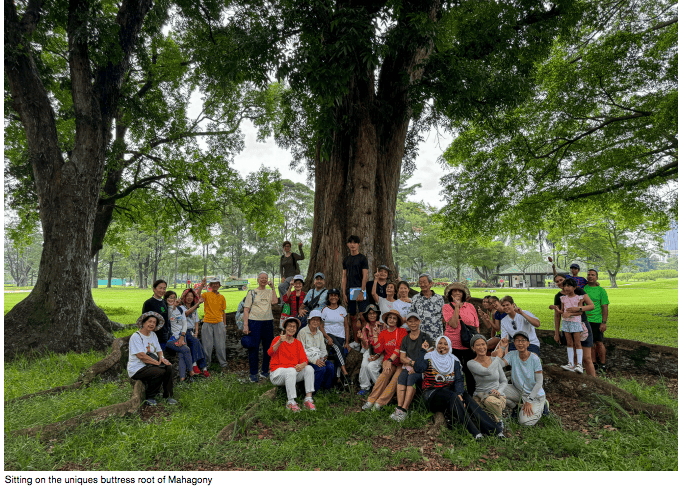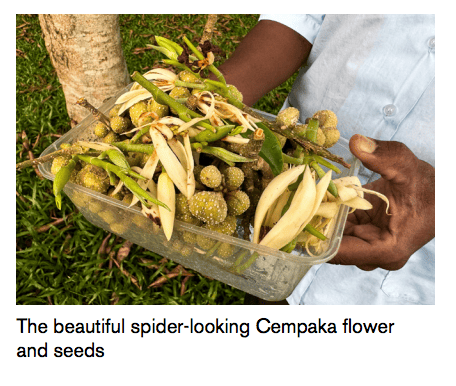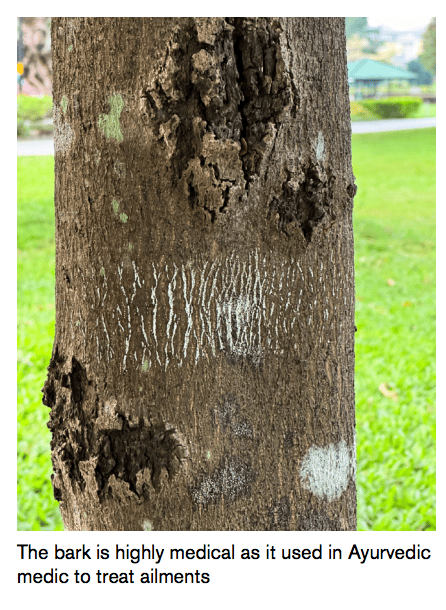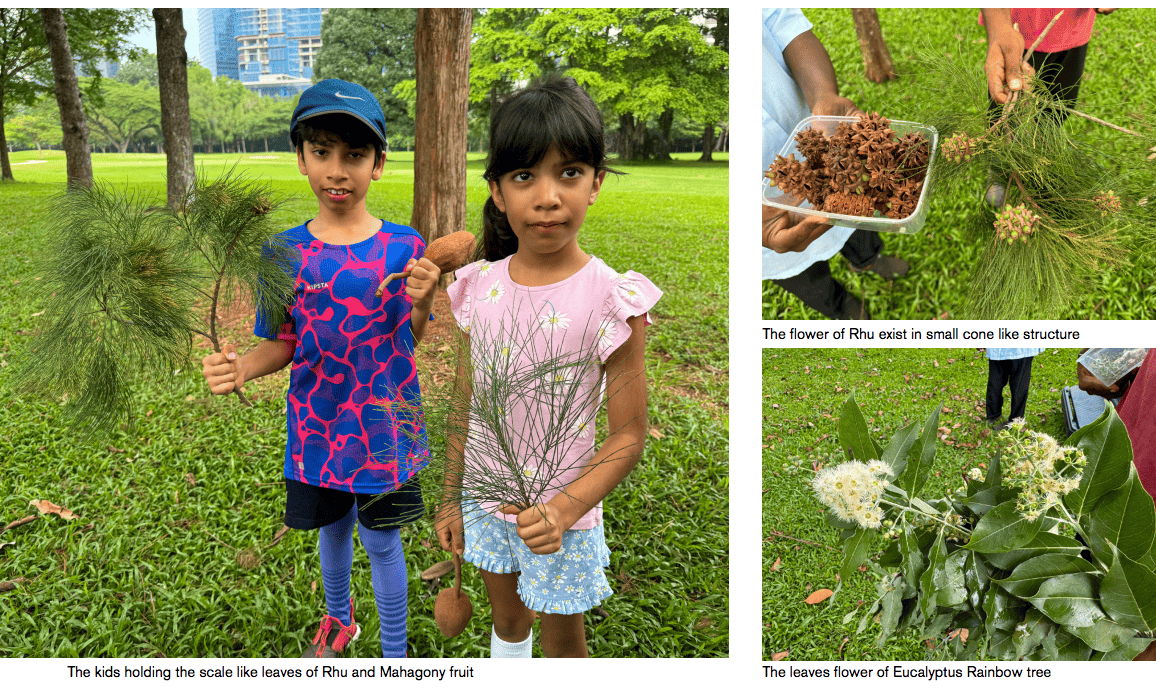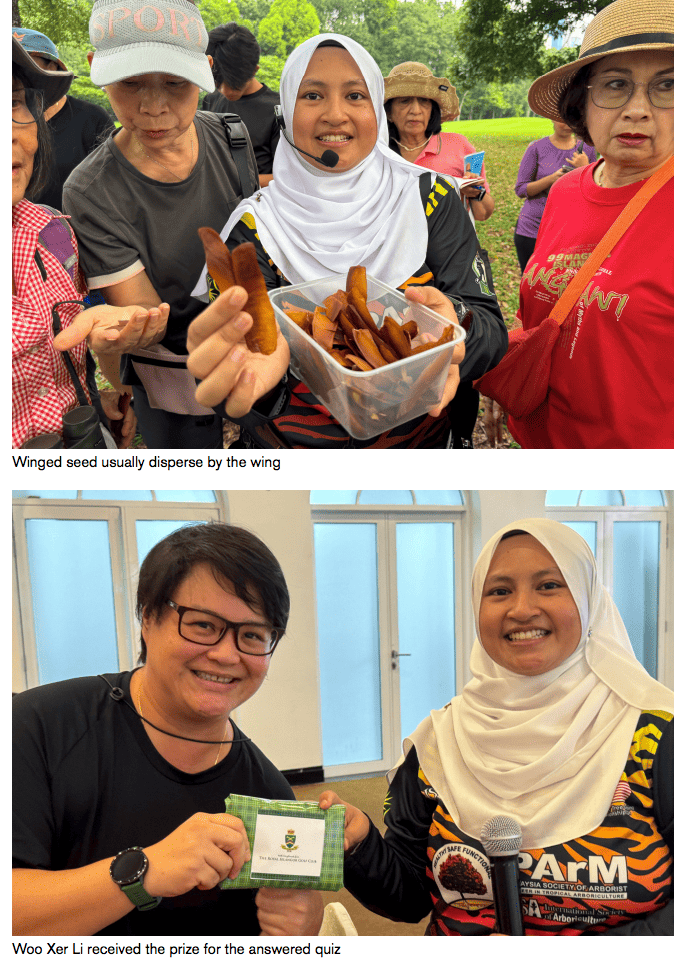Ashoka Tree as a Symbol of Love
The name Polyalthia longifolia, or “polyanlthia,” is a compound of many Greek terms representing numerous remedies. The “longifolia” refers to the tree’s long leaves. The Sanskrit term for “without sorrow,” attributed to the Ashoka tree, is the primary reason it is recognised as a symbol of love. With this interpretation, we can benefit from the medicinal properties of the tree. How does it alleviate suffering among living things? Primarily because it contains bioactive compounds, carbohydrates with antioxidant properties, tannins, steroids, and other substances that reduce oxidative stress. In simple terms, it acts as a stress reliever and mood enhancer. Furthermore, it alleviates physical suffering in women, improving uterine health and menstrual cycles, supporting recovery from childbirth, and reducing joint pain and arthritic symptoms—all of which have a significant impact on mental wellbeing.
This medicinal tree is used in Ayurvedic medicine to treat various ailments. Ayurvedic medicine approaches treatment with adaptogenic herbs for the Indian community. The bark of the tree may be useful in treating issues such as infertility, though it should be prescribed by a professional. Thus, it makes sense that it is known as the “love tree.” It represents a very balanced scale when it comes to one’s body, spirit, and soul. The dried and crushed bark, stem, and leaves can be used to make tea or pills, or can be incorporated into hydrosols or alcohol.
The founder of Buddhism, Gautama Siddharta, is believed to have been born beneath the Ashoka tree. In India, the tree is also sacred and associated with various legends. However, it seems that similar stories exist about different trees. This remains a belief, and further exploration is needed to uncover the truth. Additionally, it is said to bring wealth and good fortune. In Kenya, it is believed that the tree has the ability to sense poverty; if you are poor, it will not grow in your garden.
Fragrant Cempaka Flower
This flower belongs to the same family as Magnolia and is a hybrid of Magnolia montana and Magnolia champaca. This exquisite, opulent, and luminous green tree produces stunning, spider-like blossoms with a captivating scent. It is well-known in Chinese culture and is referred to as an aphrodisiac, meaning it can elevate spirits or stimulate sexual desire. This mature tree will cover your garden with fragrant flowers for five to six months each year.
The blossoms are used to extract essential oil. The leaves are cooked for ten to twelve hours in extra virgin olive oil to extract the oil. The tree’s tissue contains a bitter alkaloid, which contributes to its insect resistance. The wood used for carving, panelling, doors and also for furniture.
Aromatic Kapur Tree Known for Crown Shyness
The dried leaves on the ground exuded a fragrance that resembled camphor. Crown shyness is a phenomenon easily observed from below, caused by the tree canopy’s alignment that prevents them from touching or overlapping.
One participant noted that each tree performs its own task, which reflects how they cooperate with one another. The trunk of the tree is used to extract oil, which was highly sought after in the past, attracting Arab traders to Borneo. It typically blooms before the August flowering season, but it has not bloomed this time around. We haven’t seen flowers for roughly six years, but we hope for a change in the future.
Dense Merawan Tree Cluster
A previous nature tour included a visit to the Merawan tree. This Merawan is more mature compared to those seen on previous walks. From a distance, the thick, slender, and tall trunks offer a magnificent vista, resembling broccoli in crown shape. I pointed out to a new Member that the same species were planted along the Rawang bypass. We were shocked to learn that there is a penalty of one million Ringgit for felling trees there. A seedling of the tree is currently growing at the edge of the bridge as well.
Unique Buttress Roots of the Mahogany Tree
The tree’s unique buttress roots make it remarkable. It is known as a heritage tree in Singapore. The wood is regarded as one of the most valuable sources for hardwood furniture and timber in the world. The fruit’s upward ascent to the sky has earned it the nickname “skyfruit.” While walking, we observed ripe winged seeds. Each participant sampled the intensely bitter flavour of the seeds, which are a natural remedy for high blood pressure and diabetes. The fruit cracks open when ripe and ready to be shared. Consuming the seeds infrequently—no more than once a week—may aid in blood glucose regulation.
Different Crown Types of Rhu Trees
The leaves on the twigs of two distinct species of Rhu trees resemble needles. Unlike the Weeping Rhu, the Bornean Rhu has overhanging branches. The Weeping Rhu’s most intriguing feature is its breaking bark, which eventually develops a lovely texture as it ages. A neighbouring tree was discovered to have unique bark. All participants learned to distinguish between male and female flowers when the flowers and seeds were sealed. The female blossom typically has a more rounded shape. They were informed that the woody cone flower, which is sprayed with a golden hue, has an attractive shape and is often used for Christmas decorations. Due to the characteristics of this tree, typically found by the beach, its needle-like leaves are distinct from those of other trees. With their thick cuticle and depressed stomata, these needle-like leaves reduce surface area, thereby lowering water loss.
Artistic Trunk of the Rainbow Eucalyptus Tree
The rainbow-coloured trunk offers a stunning contrast to the other tree types. One participant thought it had been struck by lightning, while another suggested it was painted. However, the colours are a natural occurrence for this tree. It is regarded as the world’s most colourful tree and is the only identifiable one that grows in the northern hemisphere. It can reach a trunk diameter of 1.8 metres and a maximum height of 60 metres, primarily found in Papua New Guinea, Indonesia, and the Philippines, where its colours are the brightest.
In truth, this phenomenon is due to bark regeneration. The pale green beneath the brown bark becomes visible as it begins to peel off in sections during the dry season. This fresh layer of bark develops over time, taking on hues of blue, purple, orange, and maroon. The bark fragments fall at random, revealing the distinctive rainbow of colours that gives the Rainbow Eucalyptus its name.
Common Pulai and Indian Pulai Trees
The two varieties of Pulai trees feature the same pagoda-shaped crown. The floral scent is appealing and intensely fragrant. The pods are always observed in pairs. The name scholaris is derived from the slates currently used in schools, which are also referred to as iPads and touch pens. Students used these slates for taking notes, writing with “kalam batu,” which is composed of the wood from the tree. The milky latex emitted by the Pulai tree, which contains alkaloids, is commonly used in medicine to treat boils. The leaves are used to treat remittent fever in Peninsular Malaysia, and in Thailand, the latex is used to soothe toothaches.
This tree adds aesthetic value to the landscape and is attractive to butterflies, hummingbirds, and other pollinators. However, if placed in a moist area, epiphytes may grow along the branches and eventually damage them. To preserve the existing Pulai trees on the golf course, we also avoid planting new ones. Additionally, as it is only used for making pencils, boxes, coffins, drawing boards, picture frames, matches, and handicrafts, it is not advised for structural uses.
Please do not hesitate to contact or email your horticulturist at nur. farizaa@rsgc.com.my

